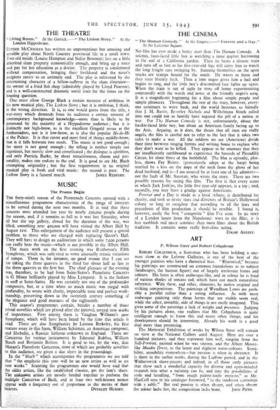ART P. Wilson Steer and Robert Colquhoun
RonEsrt COLQUHOUN, a Scotsman who has been holding a one- man show at the Lefevre Galleries, is one of the best of the younger painters who have a rhetorical bias. " Rhetorical," because his paintings are constructed on common foundations as to subject (landscapes, the human figure) out of largely irrelevant forms and colours. His 'form is often arabesque-like, and in colour he is fond of various shades of tomato red, which have not much naturalistic reference. With these, and other, elements, he makes original and striking compositions. The paintings of Wyndham Lewis are prob- ably a parallel rather than a strong influence. As with most arabesque painting only those forms that are visible seem real, white the other, invisible, side of things is not easily imagined. This gives some of the paintings a lack of weight and presence. Judging by his pictures alone, one realizes that Mr. Colquhoun is quite intelligent enough to know this and many other things, and his development should be interesting. Already his work is a good deal more than promising.
The Memorial Exhibition of works by Wilson Steer will remain on view at the National Gallery until August. Here are over a hundred pictures, and they represent him well, ranging from the Self-Portrait, painted when he was sixteen, and the Albert Moore- like Muslin Dress, to the latest and slightest water-colours. Sensi- bility, sensibility everywhere—but passion is often in abeyance. It is there in the earlier works, during the Ludlow period, and in the Walberswick shore-pieces; and indeed, in all those early pictures that show such a wonderful capacity for diverse and open-minded research into what a painting can be, and into the possibilities of style and handling, ‘` from rough palette-knife impasto," as Mr'. MacColl says in his catalogue foreword, " to the tenderest dressings with a sable." But real passion is often absent, and when absent
the odour lacks fire, the composition lacks bone. JOHN Pu'aa.






























 Previous page
Previous page